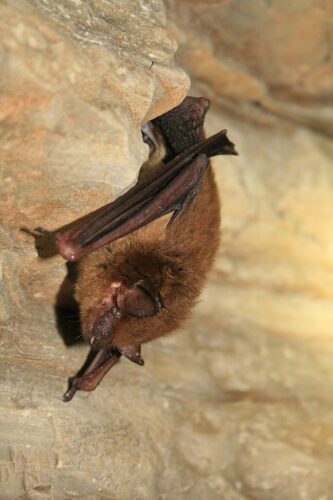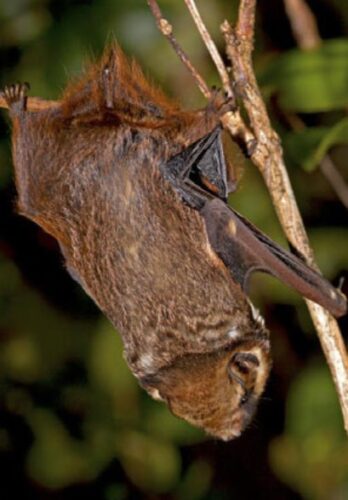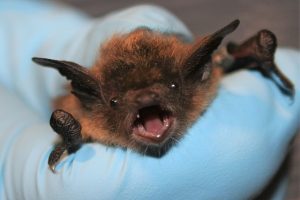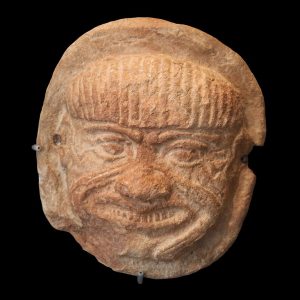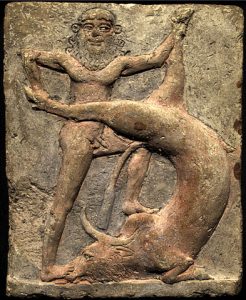The playoffs are happening, and the World Series is around the corner, but the bats I’m writing about, celebrated this coming international Bat Week, October 24th through the 31st, are the fluttery Halloween kind.
We have at least nine species of bats in the Adirondacks, making field identification difficult or impossible during nighttime encounters. The only thing to go on is size (and sometimes numbers). I was speeding down the Blue Ridge Road before dawn this week when a huge bat flew across my windshield. Well, comparatively huge, since the most common bat I encounter is the Little Brown Bat.
With echolocation and flight agility, there is little danger of a healthy bat becoming roadkill. I’ve found they are very curious creatures, so this encounter may not have been entirely coincidental. They zero in on anything that piques their interest.
The encounter made me curious about White Nose Syndrome, the fungus that has devastated North American colonizing bats. It’s still around, though you don’t hear as much about it. Biologists are hopeful a vaccine can be developed, but right now the only solution is disinfecting the mine shafts where colonies hibernate. That sounds like a losing battle to me in the long run, since some bats will inevitably reintroduce the fungus.
I see a lot of bats, especially in the spring when they emerge from hibernation and hunt during daylight hours. It’s not because the disease hasn’t spread here yet. The Adirondacks were one of the first places where White Nose Syndrome was documented, probably having much to do with the number of biologists studying wildlife here. The American bat population, overall, has declined 90%. I think what will happen is that some bats will develop resistance to the disease and populations will then recover overall, although we will likely lose some species entirely.
In my book Invoking Animal Magic, I have an entire chapter on bats. From the book:
The term “blind as a bat” is not strictly correct, since bats do have limited vision, but obviously they are not dependent on sight to navigate a dim cave. Blindness is associated with internal vision, and it was once believed that bats used psychic powers to fly at night. Even knowing they use echolocation to get a sense of their surroundings does not make their perception less mysterious. What would it feel like to map the environment with your ears?
